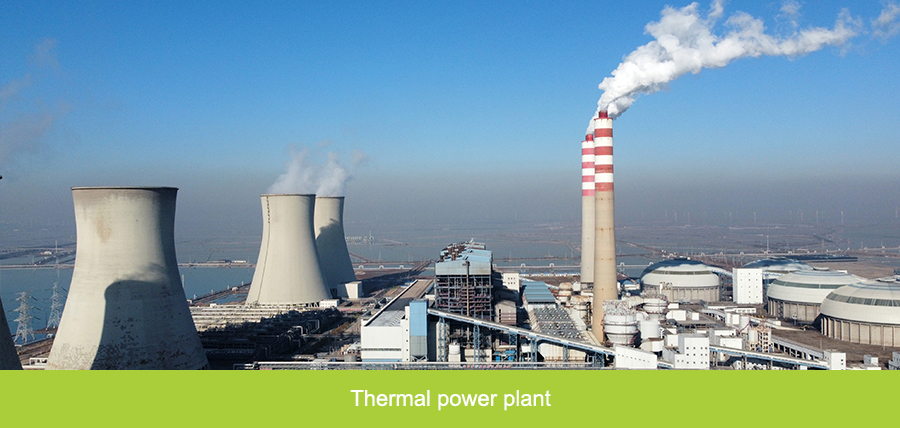Thermal Power Plant Anti-Corrosion Solve
A thermal power plant, abbreviated as a thermal power plant, is a facility that uses combustible materials (such as coal) as fuel to generate electricity. Its basic production process is as follows: the fuel heats water to generate steam during combustion, converting the chemical energy of the fuel into thermal energy. The steam pressure drives the turbine to rotate, converting thermal energy into mechanical energy. The turbine then drives the generator to rotate, converting mechanical energy into electrical energy. It is understood that in the fault shutdowns of thermal power plants, shutdowns caused by water quality and corrosion-related failures account for 2% of the total. Therefore, ensuring corrosion protection in thermal power plants is one of the important guarantees for safe electricity production.



-
 Background
Background -
 Design Basis
Design Basis -
 Main Plant Building
Main Plant Building -
 Desulfurization
Desulfurization -
 Boiler System
Boiler System -
 Coal Transportation
Coal Transportation -
 Circulating Water Pipes
Circulating Water Pipes -
 Cooling Tower
Cooling Tower
-
- Corrosion Background of Thermal Power Plants
-
I. Corrosion Background of Thermal Power Plants
China is a country with an energy structure primarily based on coal, and this characteristic of the energy structure has led to severe corrosion situations, such as acid rain and other pollution problems. Air pollution caused by coal-fired power plants is quite serious, belonging to smoke-type pollution. Dust, sulfur dioxide (SO₂), and nitrogen oxides (NOx) are the main pollutants in the atmosphere. A thermal power plant is a complex corrosive environment. In addition to the severe atmospheric corrosion caused by coal combustion, it also involves corrosion of various tank walls, external and internal corrosion of circulating water pipes, high-temperature insulation parts, and the most corrosive environment—the flue gas desulfurization system (FGD).


Atmospheric corrosion environment of steel structures
The fuel used in thermal power plants includes heavy oil and coal, which, during operation, release large amounts of corrosive gases like sulfur compounds. These gases combine with water vapor or rainwater in the air to form acidic solutions. The deposition of coal ash on steel structures forms electrolytes, accelerating electrochemical corrosion of steel structures. Therefore, corrosion protection in thermal power plants becomes one of the key aspects of production and maintenance. In power plants, steel structures exposed to atmospheric corrosion mainly involve:
(1) Boiler steel structure
(2) Main plant building steel structure
(3) Coal conveying system: coal unloading machine, stacker reclaimer, crane, and coal conveyor bridge
(4) Outer walls of pipes
(5) Inner walls of pipes
The corrosion level of these steel structures in atmospheric environments, due to their location in the corrosive environment of thermal power plants, is classified as high-level environment C4 according to the international standard "Corrosion Protection of Steel Structures by Coating Systems" ISO 12944-2.
-
How to Select the Right Coating Type?
We don't know where to start.
-
ISO 12944 is a standard developed for corrosion protection of steel structures by paints, determining the corrosive environment, anti-corrosion life, paint matching, and film thickness.
Choose
-
How to Solve Industry with Coatings?
Corrosion factors are numerous and varied.
-
We serve municipal engineering, chemical industry, power plants, steel structure factories, and wastewater treatment plants, with numerous successful cases and experience.
Experience